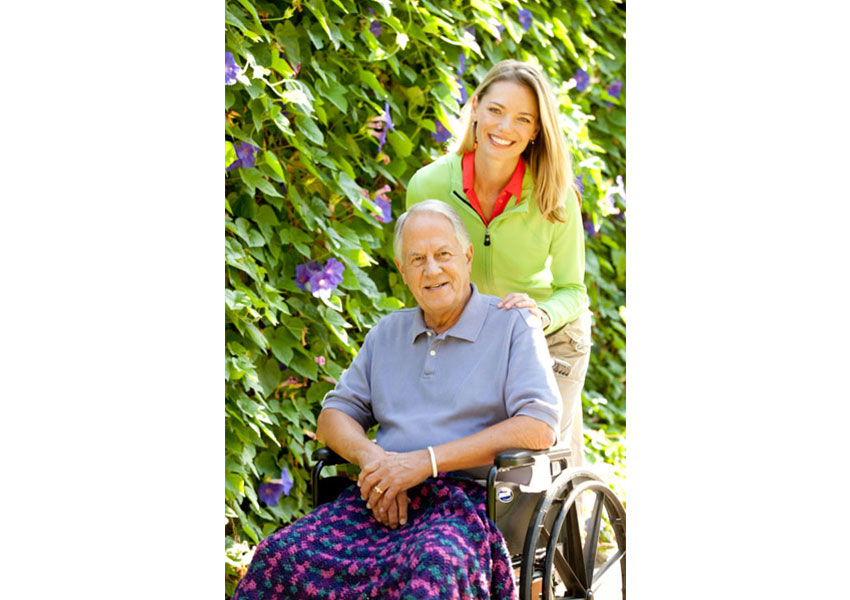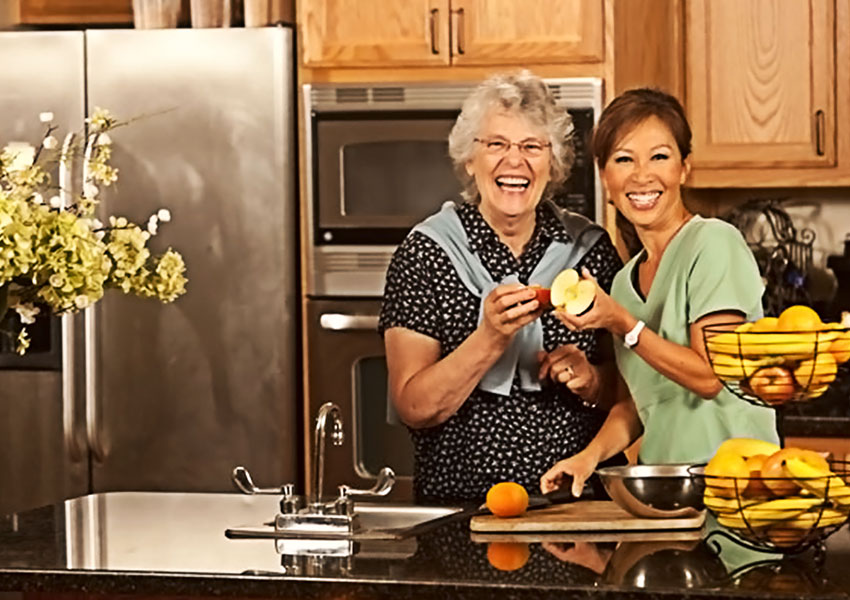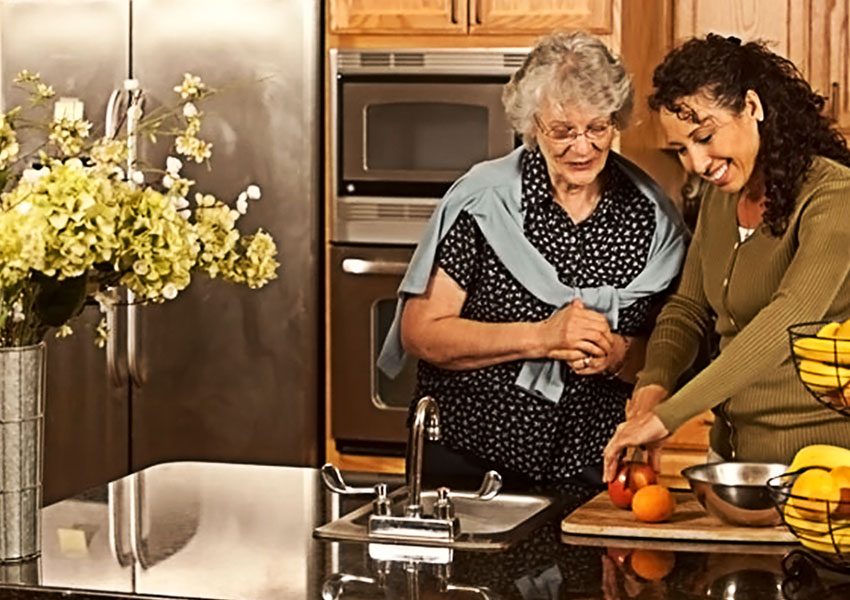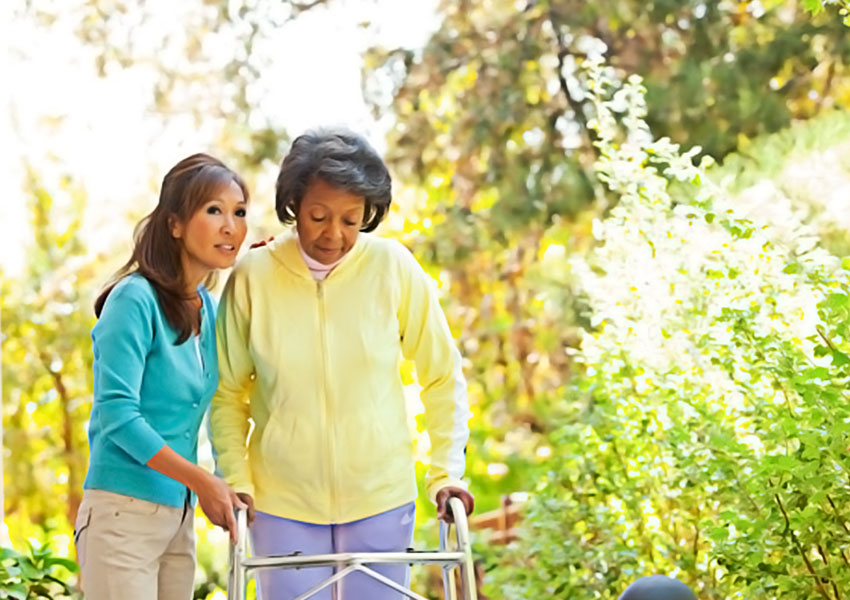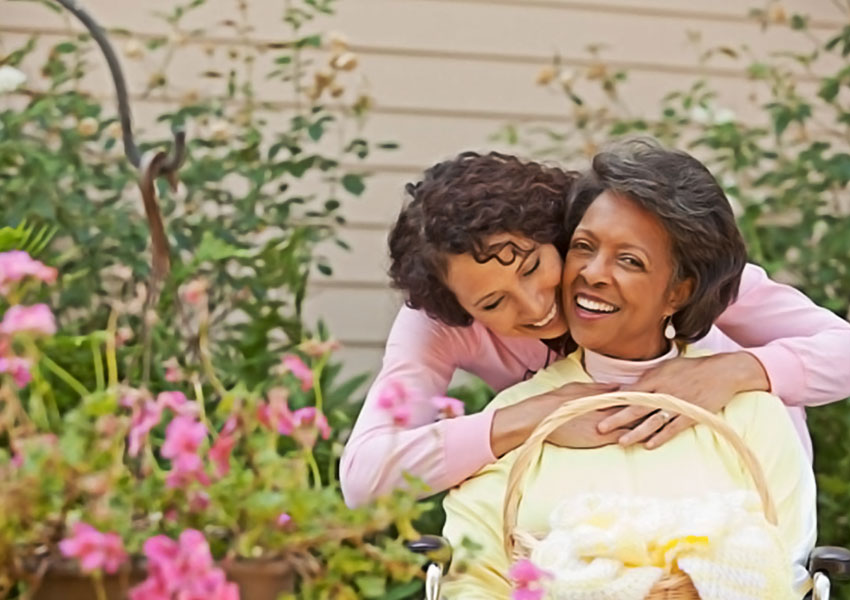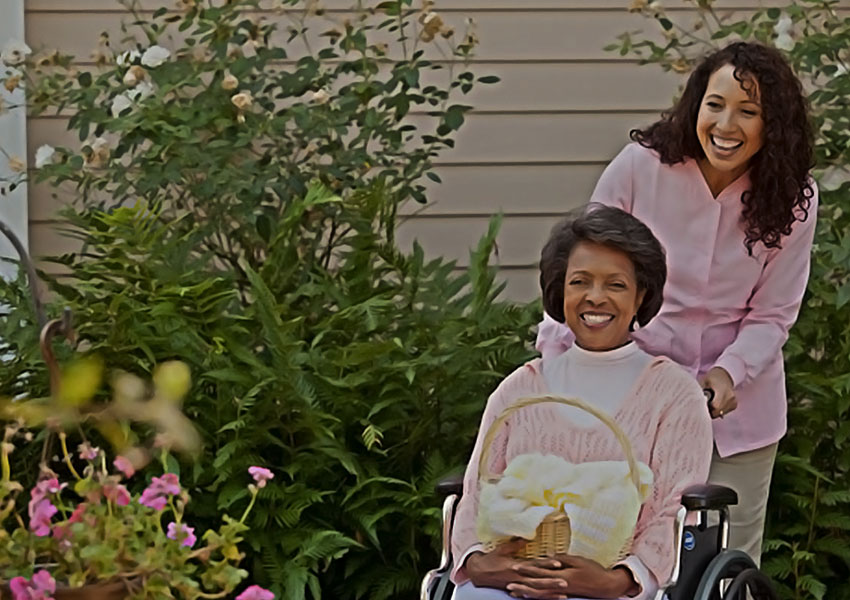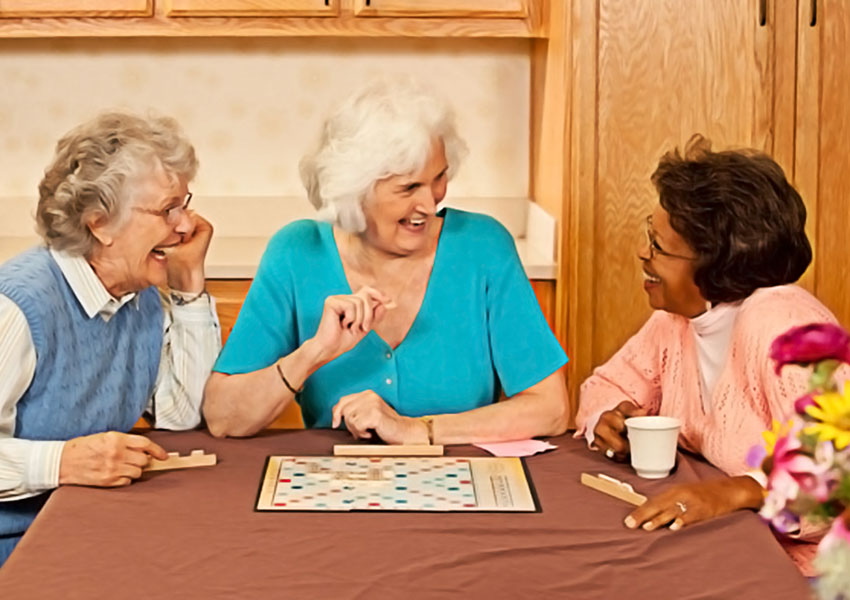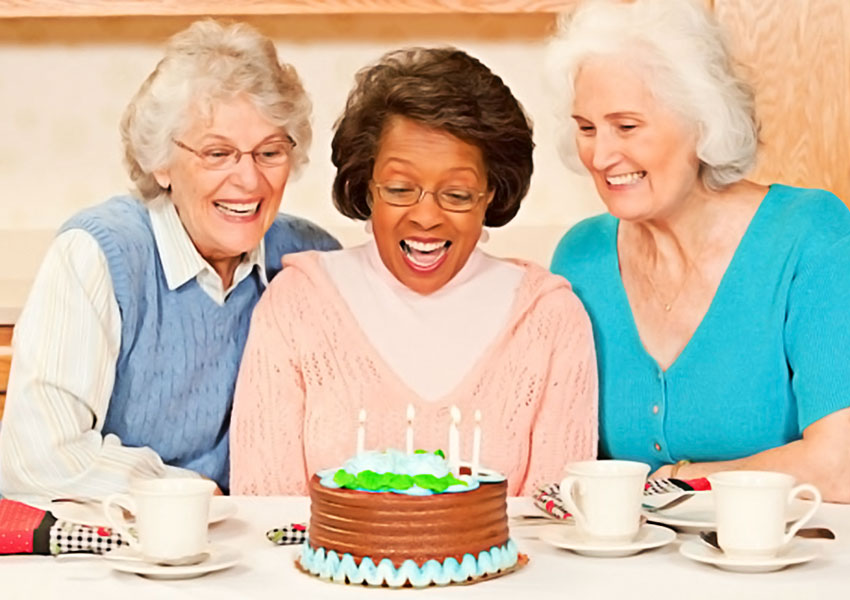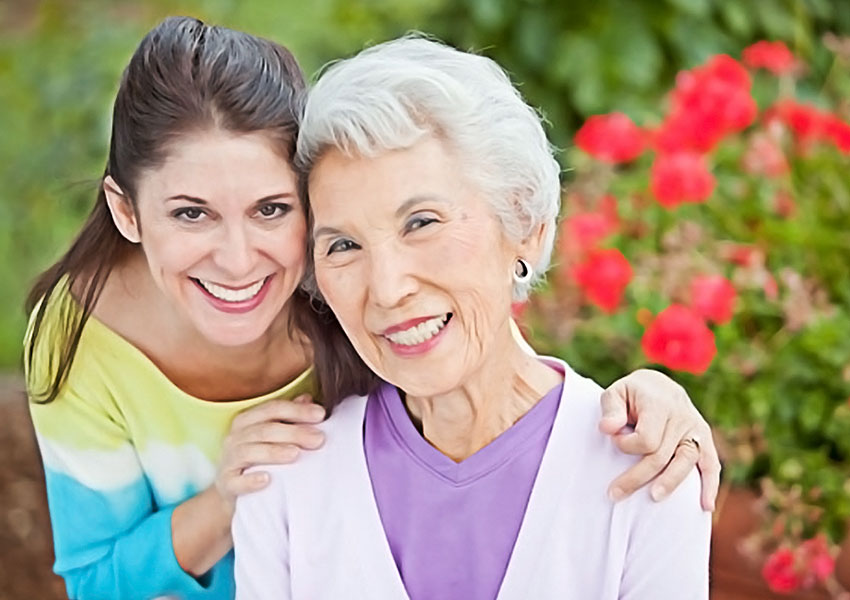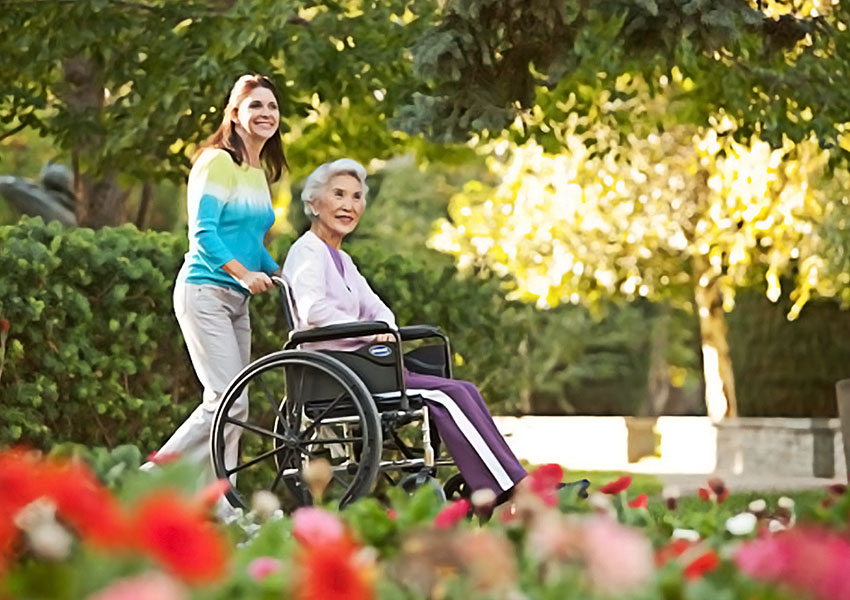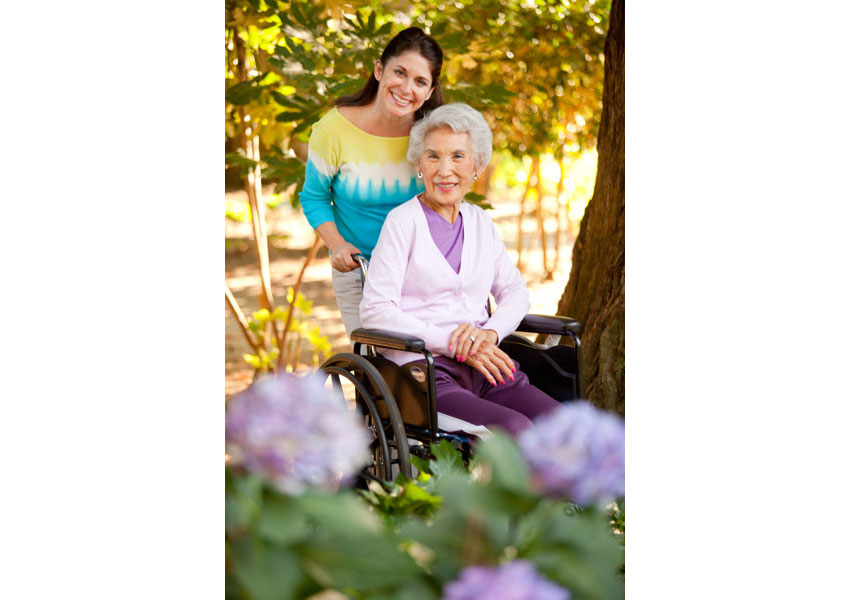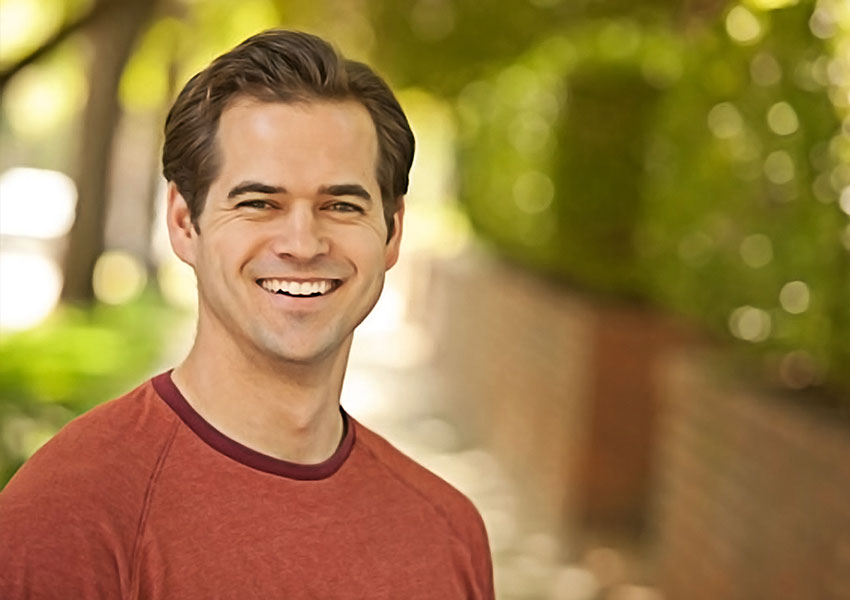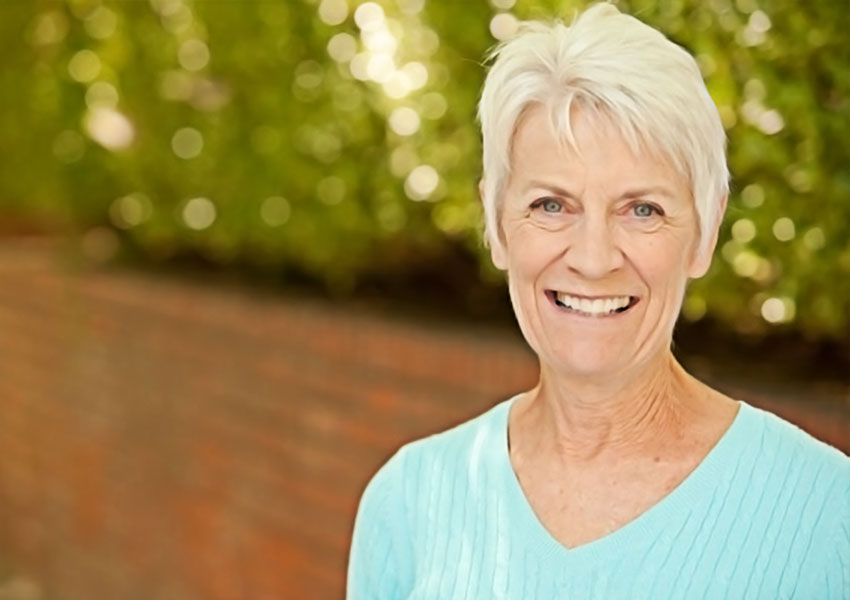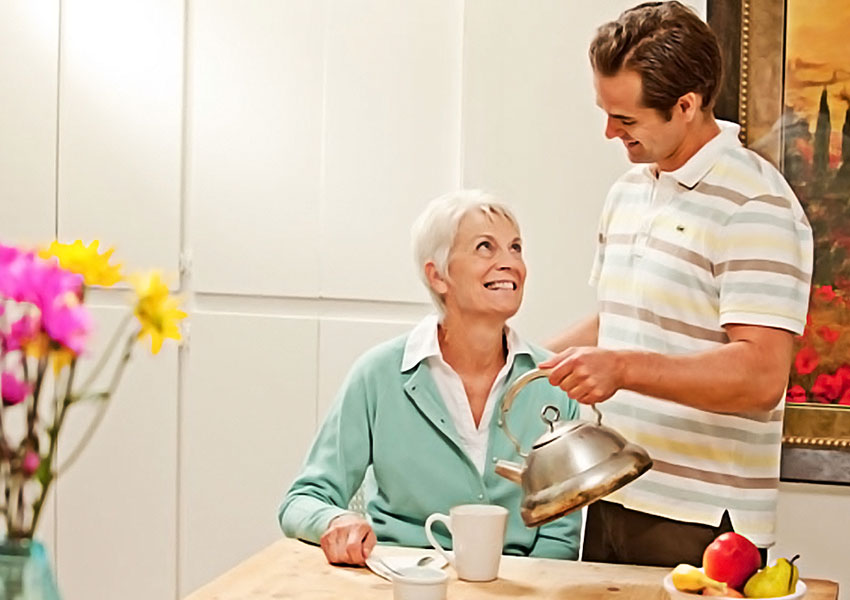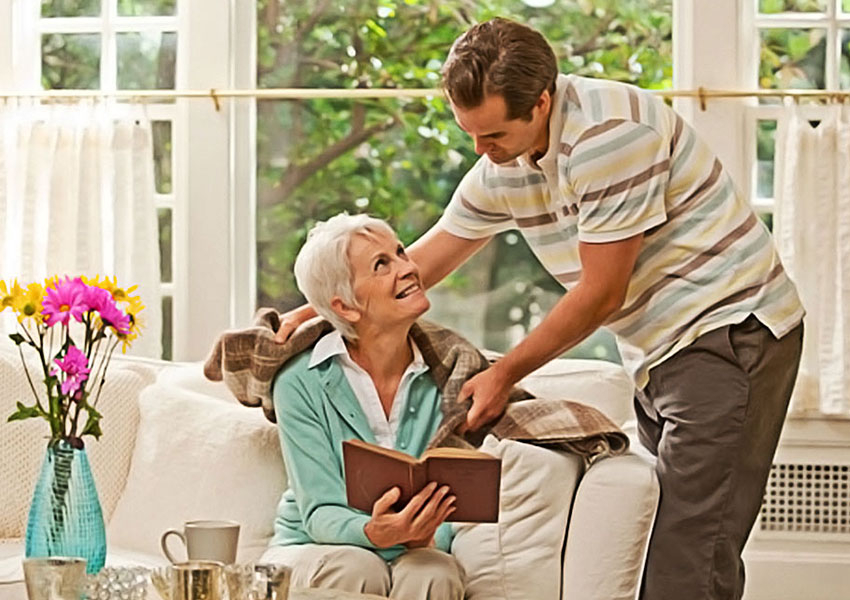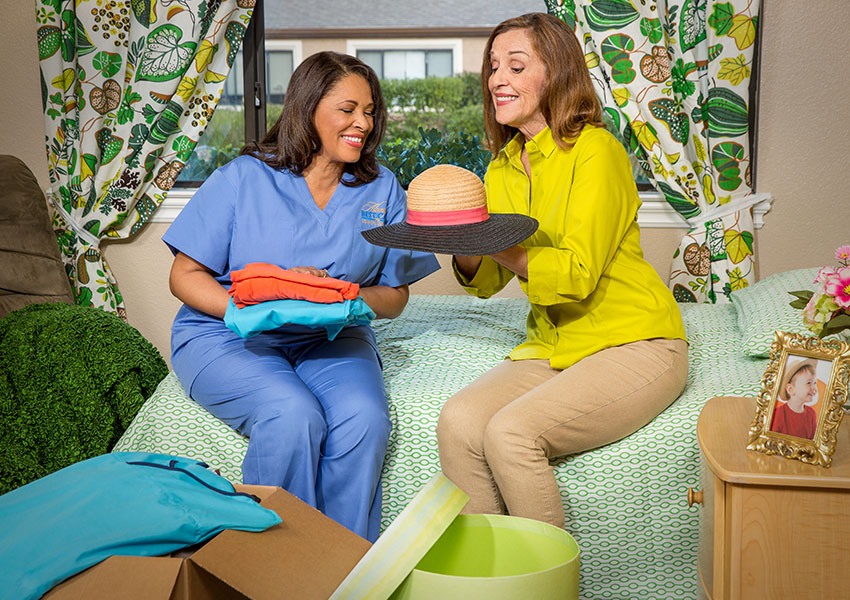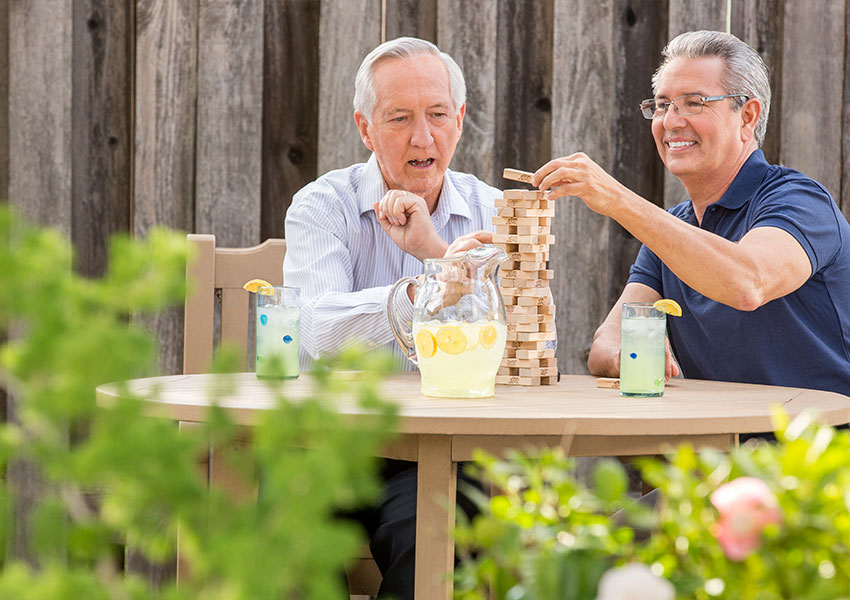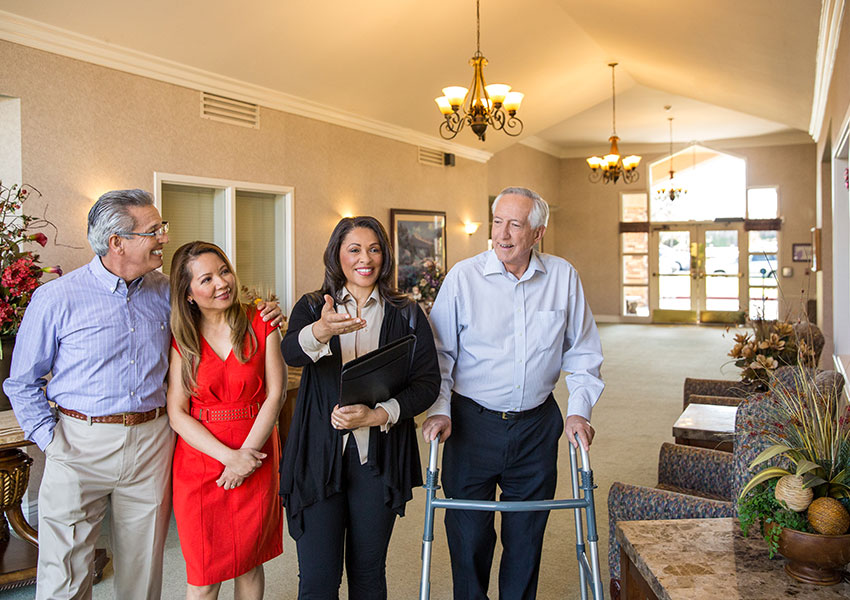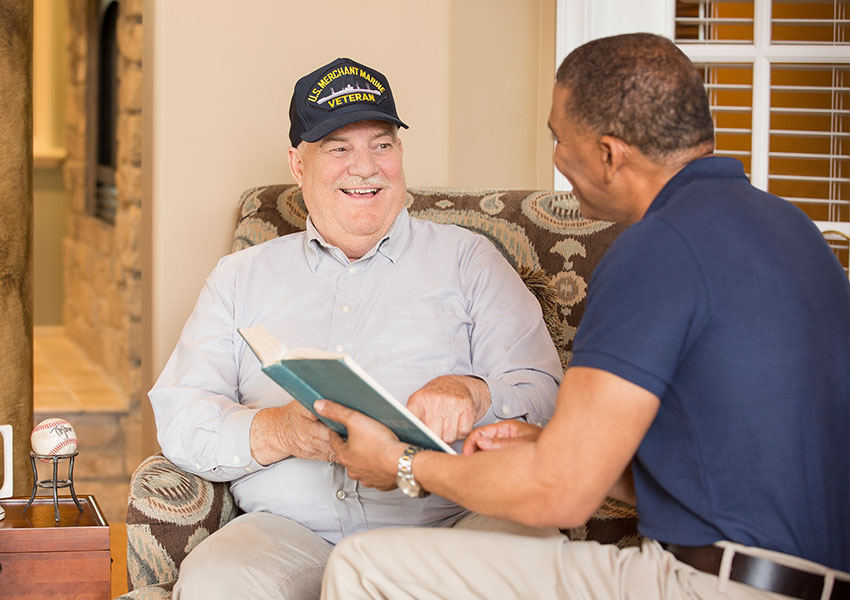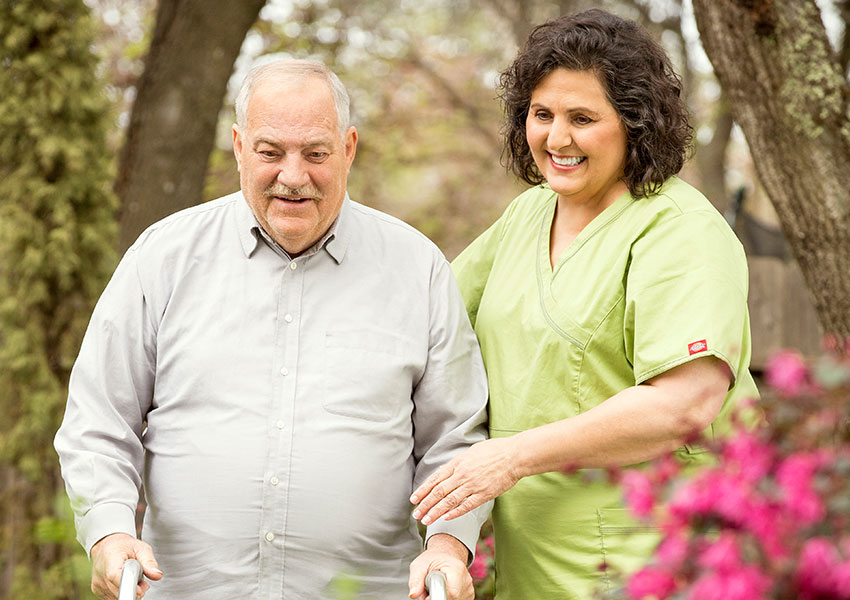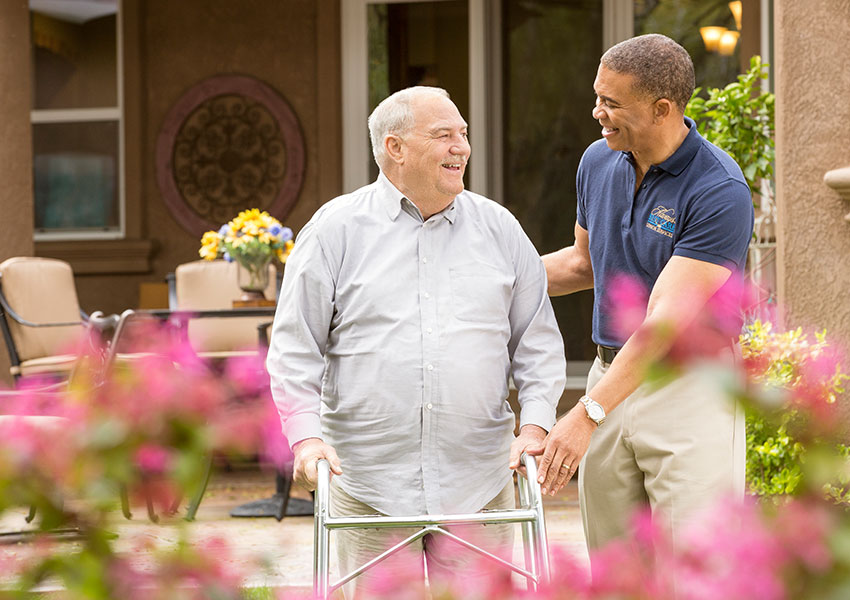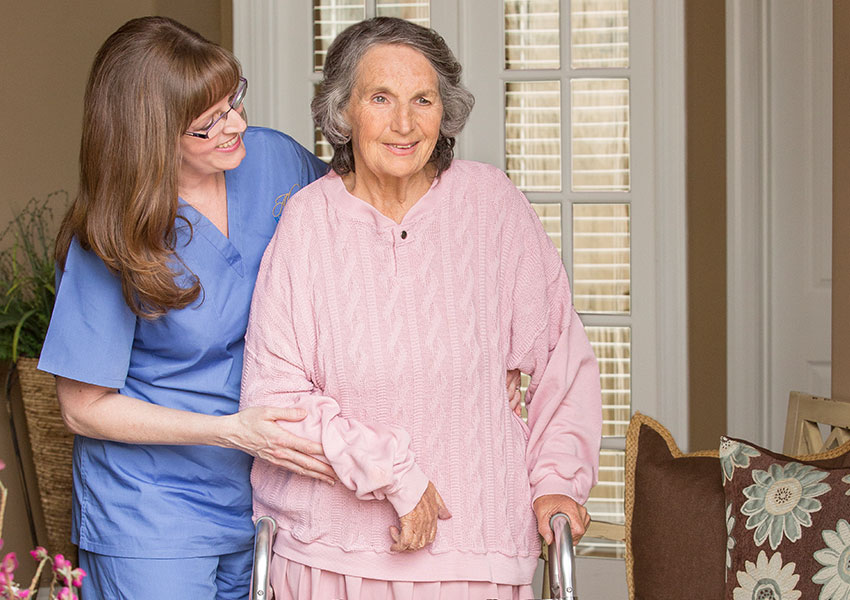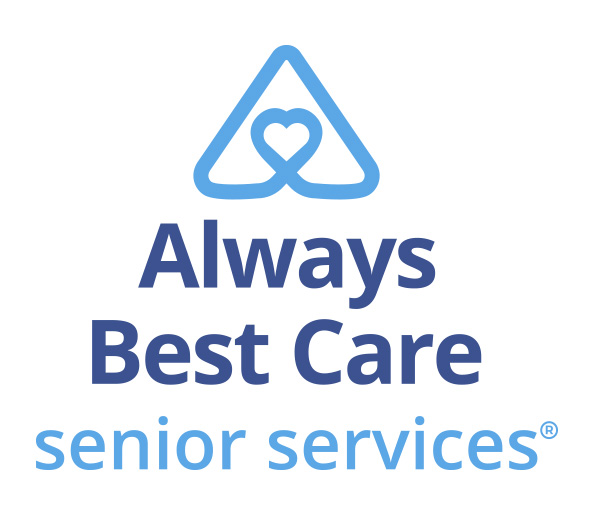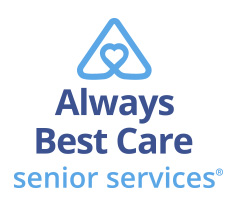For decades, a large percentage of the older population has remained in the same home through many stages of their life cycles (often for nearly a lifetime), in sharp contrast to today’s generation that frequently moves or resides in temporary housing. Unfortunately, as our parents and elderly loved ones age and their health becomes more frail, the agonizing decision to move them to a safe and supportive environment becomes necessary. Resistance and grief are common reactions to leaving the home that is comfortable, familiar and full of treasured memories.
Adult children and other family members are often faced with the reality of their loved one’s limitations and inability to safely remain in their current setting due to dementia, progressive disease processes, diminishing eyesight or caregiver fatigue. Other factors that necessitate change include wandering, confusion, weight loss, falls, medication incompliance, sleep disturbances, driving accidents, lack of self care and isolation. In addition, finding and financing adequate home care services may present a barrier to remaining at home. This dilemma is difficult for families as they attempt to weigh all of the factors and ultimately prepare for a move away from the family home. Sadness, guilt, helplessness and anxiety are just some of the feelings that can arise during this time of instability and uncertainty.
As the need for change becomes clearer, a sense of grief and loss can be felt by all members of the family. Just as in death, the five stages of grief can apply to this difficult transition in life …
-
Denial about the reality of the health and safety conditions at home.
-
Anger at the changes that have occurred, at the loss of security of one’s personal space and at the family members who may be responsible for this change.
-
Bargaining to remain in the home longer, promises to fix the problems and making deals to avoid a move.
-
Depression that may be present or develop as the result of moving and having to let go of one’s current lifestyle.
-
And finally, acceptance of the change; a chance to refocus, gain energy and set new goals in a different environment.
Here are some suggestions to help caregivers and family members grieve and assist in the transition from a lifetime home to assisted living or another care setting:
-
Plan a family meeting where all concerned parties can come together and thoroughly discuss needs and moving options. Be truthful and realistic about the need for a loved one to move. Initially, keep emotions to the side and focus on the facts at hand, especially if your loved one is unable to comprehend the situation and see the bigger picture.
-
Talk with others who may have already traveled on this journey and learn from their experiences. Find others who can ‘walk’ beside you during this transition such as a physician, clergy, friend, social worker, caregiver or consultant.
-
Be prepared for good days and bad days as change and loss are realized by all who are involved. Be aware that decisions and emotions may waiver during this transition process. Remain focused on the risks and facts surrounding the need for change and continue to move forward. Offer reassurance when resistance surfaces and keep a positive attitude about the move and the opportunities that may be available at the new residence.
-
Involve the family member or loved one in the planning and preparation to move by touring several housing options and encouraging choices for items to take along such as antiques, furniture or photos that generate fond memories.
-
Join a caregiver support group to share your feelings and receive support from others who have had similar experiences. Write down feelings or ideas in a journal, check out the library for helpful reading material, find information through the Internet or seek support from counselors, professionals or local organizations such as the Alzheimer’s Association, Parkinson’s Disease Organization or American Cancer Society.
Many senior home care companies, like Always Best Care Senior Services, can offer support to families. Some of the services they provide include caregiver training for family members serving as a primary caregiver, respite care for family caregivers through the use of companions and personal care attendants, assistance to family caregivers in gaining access to supportive services, and assisted living selection assistance and information about available living options.
If you are facing decisions that are associated with the reality of your loved one’s limitations and inability to safely remain in their current setting, please reach out to a senior care professional in your area.
Kristine Dwyer, LSW, is a Licensed Social Worker and caregiver Consultant for Carlton County Public Health in Cloquet, Minnesota. Through its network of independently owned and operated franchises, Always Best Care Senior Services provides non-medical in-home care, assisted living placement and skilled home health care for seniors across the country. Visit Always Best Care Senior Services at www.alwaysbestcare.com.
Always Best Care Senior Services
Always Best Care Senior Services (www.alwaysbestcare.com/) is based on the belief that having the right people for the right level of care means peace of mind for the client and family. Always Best Care Senior Services has assisted over 25,000 seniors, representing a wide range of illnesses and personal needs. This has established the company as one of the premier providers of in-home care, assisted living placement assistance, and skilled home health care.
April, 2011
To print this article CLICK HERE








